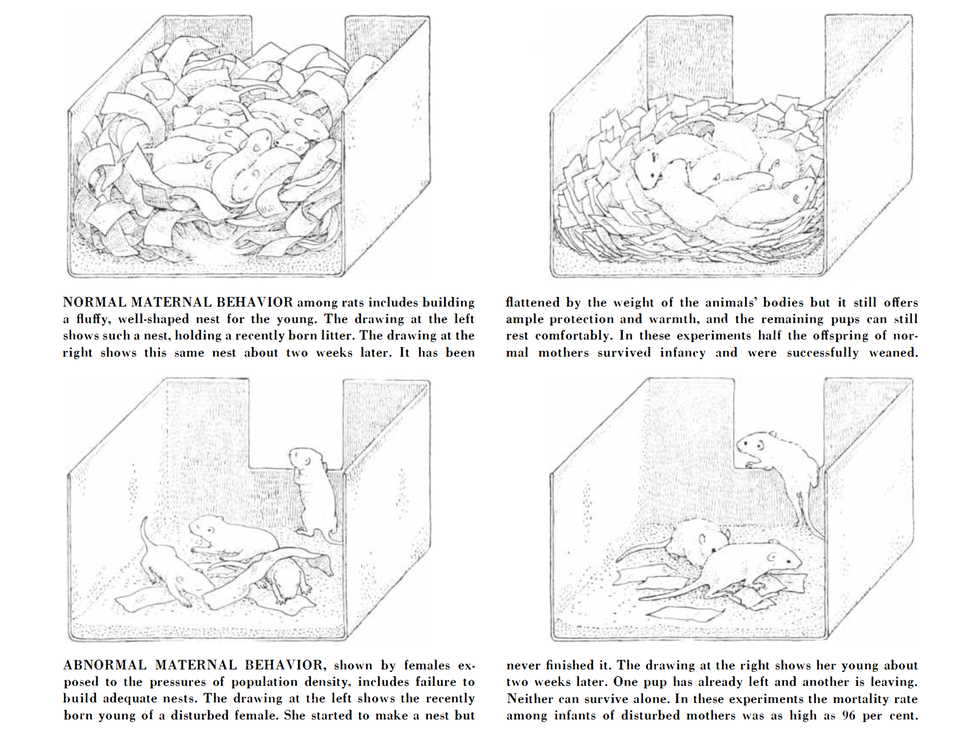

Calhoun had designed quite a few mouse environments. The trouble was, this utopia did not have a benevolent creator.
#Universe 25 mouse utopia free
PCA as Metro-Maps & Hierarchical Clustering on Principal Components – DNA.today on – free tabular data formats converter Universe 25 was a giant box designed to be a rodent utopia.csvkit command-line spreadsheet can convert and compute multiple Excel files – Biochemistry Computational Research Facility (BCRF) – UW–Madison on in2csv: the Excel killer is part of csvkit the command-line spreadsheet.
#Universe 25 mouse utopia software
1freehosting alternatives and similar software alternativeto net – cellhow on : finding alternate software.Oleg Moskvin on AI chat models at the command line.Data visualisation using R, for researchers who don’t use R.OpenAI Plays Hide and Seek…and Breaks The Game.AI chat models at the command line – continued.Paradise couldn’t even last half a decade.Īnd so it goes… Are there lessons humans should learn?Ī 38min YouTube video describes the experiment: It’s unclear exactly when the last resident of Universe 25 perished, but it was probably sometime in 1973. Have you ever wondered what life would be like if you had everything you could want, food, water, space, mates How would your life turn out if all of these. It will be interesting to see if this trend reverses itself when the population is cut by half or more, or if it is an irreversible trend.
#Universe 25 mouse utopia how to
(These individuals were forever changed-when Calhoun’s colleague attempted to transplant some of them to more normal situations, they didn’t remember how to do anything.) In May of 1970, just under 2 years into the study, the last baby was born, and the population entered a swan dive of perpetual senescence. Like Calhouns Universe 25, they do not have the same issues in other countries that they have to deal with (ie hunger,wars,cultural clashes, high crime etc.) ie close to the Utopia experiments. Most of the adolescent mice retreated even further from societal expectations, spending all their time eating, drinking, sleeping and grooming, and refusing to fight or to even attempt to mate. They also took their stress out on their babies, kicking them out of the nest too early, or even losing them during moves. Meanwhile, overextended mouse moms and dads began moving nests constantly to avoid their unsavory neighbors. Washed-up males gathered in the center of the Universe, near the food, where they fretted, languished, and attacked each other. It was not the first time the ethologist had.

Spinster females retreated to high-up nesting boxes, where they lived alone, far from the family neighborhoods. Every aspect of Universe 25, as this particular model was called, was designed to cater for the well-being of its rodent residents, increase their lifespan, and allow them to mate. As new generations reached adulthood, many couldn’t find mates, or places in the social order-the mouse equivalent of a spouse and a job.

Such rapid growth put too much pressure on the mouse way of life. The article describes the end of the Utopia in dire terms: The first 8 white mice installed July 9, 1968, multiplied to 620 by August next year, 1969.


 0 kommentar(er)
0 kommentar(er)
